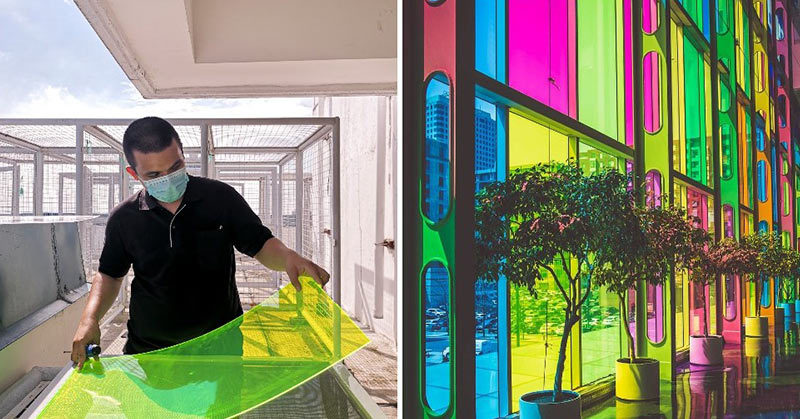Food waste and green energy production are two problems many scientists and environmentalists are clamoring to solve. What if one invention could take care of both? These solar windows made from rotting vegetables can do just that.
Solar Windows Made from Rotting Vegetables
AuREUS is a new green technology invented by Carvey Maigue Mapua University in the Philippines. These solar windows take something that would otherwise be tossed out – rotting fruit – and harness the sun’s energy. (1)
The AuREUS solar windows use technology derived from the same phenomenon that creates the Northern Lights. They capture high energy UV light from the sun and using luminescent particles in the atmosphere, turn them into low-energy visible light. (2)
How They Work
A similar type of luminescent particles can be derived from certain fruits and vegetables. These are suspended in a resin substrate and used as the core technology on both AuREUS devices, the Borealis Solar Window and Astralis Solar Wall. (2)
When UV light hits the panels, the particles absorb the light and then re-emit it as visible light along the edges. PV cells along the edges then capture that visible light and convert it to DC electricity. (2)
Finally, regulating circuits process the voltage output that allows for battery charging, storage, and utilization of the electricity. (2)
Solar Windows Turn Buildings into Solar Farms
As if creating a space where rotting produce can be put to good use wasn’t good enough, AuREUS solar windows essentially turn buildings into vertical solar farms. Unlike traditional solar farms, which must be placed at an angle in order to catch the sun’s rays, AuREUS can produce electricity even when not facing the sun. This is because the panels capture UV light. (2)
AuREUS solar windows and walls can capture UV rays, even indirectly. This includes light scattered by clouds or even bouncing along walls, pavement, and other surfaces. (2)
This can make them especially effective in urban settings. Another bonus is that unlike traditional windows that reflect UV rays back onto the people walking down the street, AuREUS solar windows absorb those rays. This protects people both in and outside of potential UV damage. (2)
Next Steps
Currently, 80% of the dyes for the luminescent particles are being extracted from fruits and vegetables. The team is doing additional research in order to bump that up to 100%. (2) The five colors being used are red, orange, yellow, green, and blue.
The team must do more research to find a stable option for the blue dye. With more funding and more time, buildings in our cities and towns could start looking a lot more colorful – and make way for a greener future. (2)

